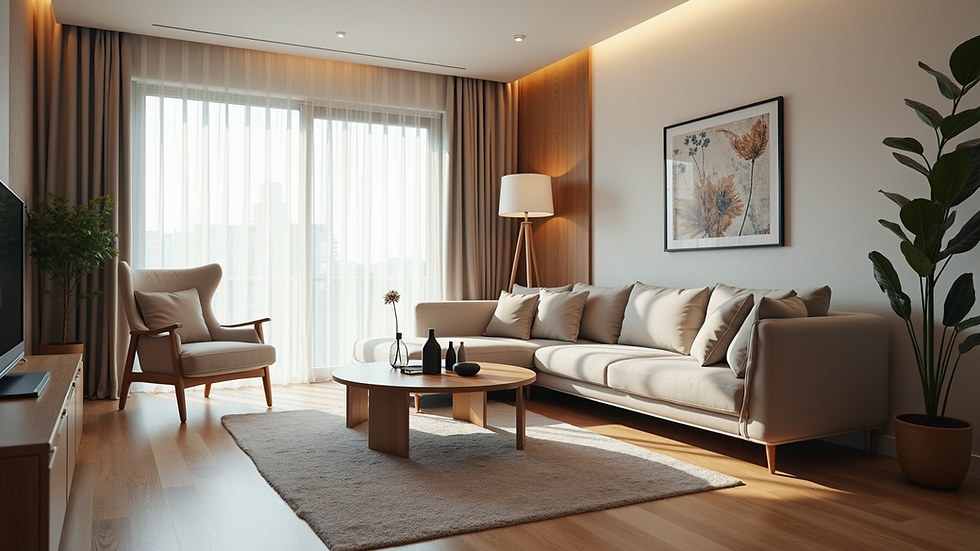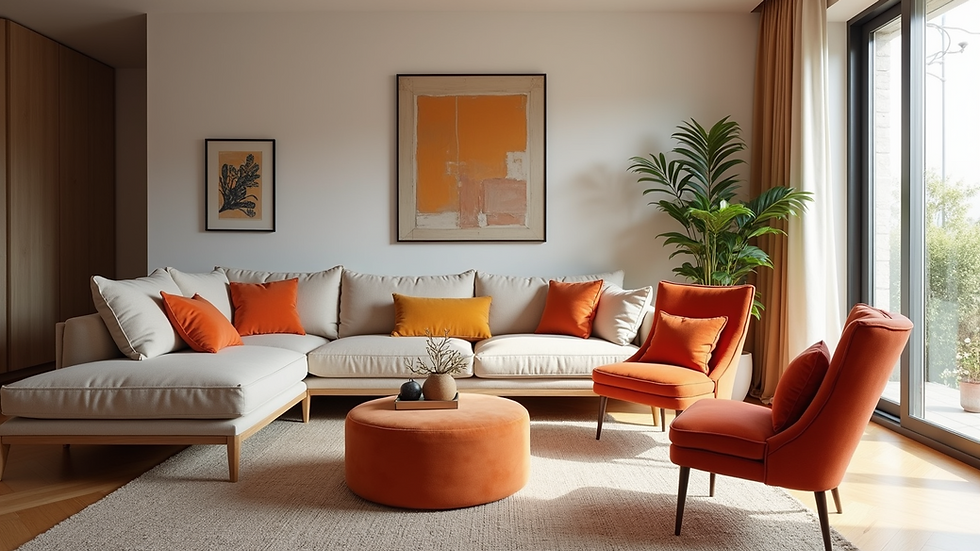Achieve Quality Interiors with Expert Project Management
- Shael
- Aug 14
- 4 min read
Creating beautiful interiors is not just about choosing the right colors or furniture. It involves careful planning, coordination, and execution. This is where expert project management comes into play. With the right approach, you can transform any space into a stunning environment that reflects your style and meets your needs.
In this blog post, we will explore how effective project management can lead to quality interiors. We will discuss the key elements of project management, the benefits it brings to interior design, and practical tips to ensure your project runs smoothly.
Understanding Project Management in Interior Design
Project management in interior design involves overseeing the entire process from start to finish. This includes planning, organizing, and managing resources to achieve specific goals.
Key components of project management include:
Scope Definition: Clearly outlining what the project will entail.
Budgeting: Estimating costs and ensuring the project stays within financial limits.
Scheduling: Creating a timeline for each phase of the project.
Resource Allocation: Assigning tasks to team members and ensuring they have the necessary tools.
By focusing on these elements, you can ensure that your interior design project is well-organized and efficient.
The Importance of Quality Control
Quality control is a crucial aspect of project management. It ensures that every detail meets the desired standards. This can involve regular inspections, feedback sessions, and adjustments as needed.
Here are some ways to maintain quality throughout your project:
Regular Check-ins: Schedule meetings with your team to discuss progress and address any issues.
Feedback Loops: Encourage open communication. This allows for quick adjustments and improvements.
Final Inspections: Before completing the project, conduct a thorough review to ensure everything meets your expectations.
By implementing these practices, you can achieve high-quality results that align with your vision.
Setting a Realistic Budget
Budgeting is often one of the most challenging aspects of any project. A well-planned budget helps prevent overspending and ensures that you can achieve your desired outcomes.
To create a realistic budget, consider the following steps:
Research Costs: Gather information on materials, labor, and other expenses.
Include Contingencies: Set aside a portion of your budget for unexpected costs.
Prioritize Needs vs. Wants: Identify essential elements and those that can be adjusted or eliminated if necessary.
By taking the time to create a detailed budget, you can avoid financial stress and keep your project on track.
Creating a Detailed Timeline
A detailed timeline is essential for keeping your project organized. It helps everyone involved understand their responsibilities and deadlines.
To create an effective timeline, follow these steps:
Break Down Tasks: Divide the project into smaller, manageable tasks.
Set Deadlines: Assign realistic deadlines for each task.
Monitor Progress: Regularly check in on the timeline to ensure everything is on schedule.
A well-structured timeline can help you stay focused and ensure that your project progresses smoothly.
Choosing the Right Team
The success of your interior design project largely depends on the team you choose. Selecting the right professionals can make a significant difference in the quality of your results.
When building your team, consider the following:
Experience: Look for individuals with a proven track record in interior design and project management.
Communication Skills: Choose team members who can effectively communicate and collaborate.
Specialization: Depending on your project, you may need specialists in areas like lighting, furniture, or color theory.
By assembling a skilled and cohesive team, you can enhance the overall quality of your project.
Effective Communication
Communication is key in any project. It ensures that everyone is on the same page and helps prevent misunderstandings.
To foster effective communication, consider these strategies:
Regular Updates: Keep everyone informed about project developments and changes.
Open Channels: Encourage team members to share their thoughts and concerns.
Documentation: Maintain clear records of decisions and changes to refer back to as needed.
By prioritizing communication, you can create a collaborative environment that leads to better results.
Embracing Flexibility
While planning is essential, flexibility is equally important. Interior design projects can often encounter unexpected challenges. Being adaptable allows you to respond effectively to these changes.
Here are some tips for embracing flexibility:
Stay Open-Minded: Be willing to consider alternative solutions if issues arise.
Adjust Timelines: If necessary, be prepared to modify your schedule to accommodate changes.
Revisit Budgets: If costs change, reassess your budget and make adjustments as needed.
By maintaining a flexible mindset, you can navigate challenges and keep your project moving forward.
The Role of Technology
Technology plays a significant role in modern project management. It can streamline processes, improve communication, and enhance overall efficiency.
Consider using the following tools:
Project Management Software: Tools like Trello or Asana can help you organize tasks and track progress.
Design Software: Programs like SketchUp or AutoCAD allow for detailed design planning and visualization.
Communication Platforms: Tools like Slack or Microsoft Teams facilitate real-time communication among team members.
By leveraging technology, you can improve the management of your interior design project.
Final Touches and Quality Assurance
As your project nears completion, it is essential to focus on the final touches. These details can significantly impact the overall quality of your interiors.
Consider the following:
Styling: Add decorative elements that enhance the space and reflect your style.
Final Inspections: Conduct a thorough review to ensure everything meets your standards.
Feedback from Others: Invite friends or family to provide their input on the finished space.
By paying attention to these final details, you can achieve a polished and high-quality interior.
Celebrating Your Success
Once your project is complete, take the time to celebrate your success. Reflect on the journey and the hard work that went into creating your beautiful interiors.
Consider hosting a small gathering to showcase your new space. This not only allows you to enjoy the results but also share your achievement with others.
By celebrating your success, you can appreciate the effort that went into your project and inspire others to pursue their interior design dreams.
Wrapping Up Your Interior Design Journey
Achieving quality interiors is a rewarding experience that requires careful project management. By focusing on key elements such as budgeting, communication, and flexibility, you can create a space that truly reflects your style and meets your needs.
Remember, the journey does not end with the completion of your project. Continue to enjoy and maintain your space, and consider future projects that can further enhance your home.
With the right approach, you can transform any interior into a beautiful and functional environment. Happy designing!



Comments